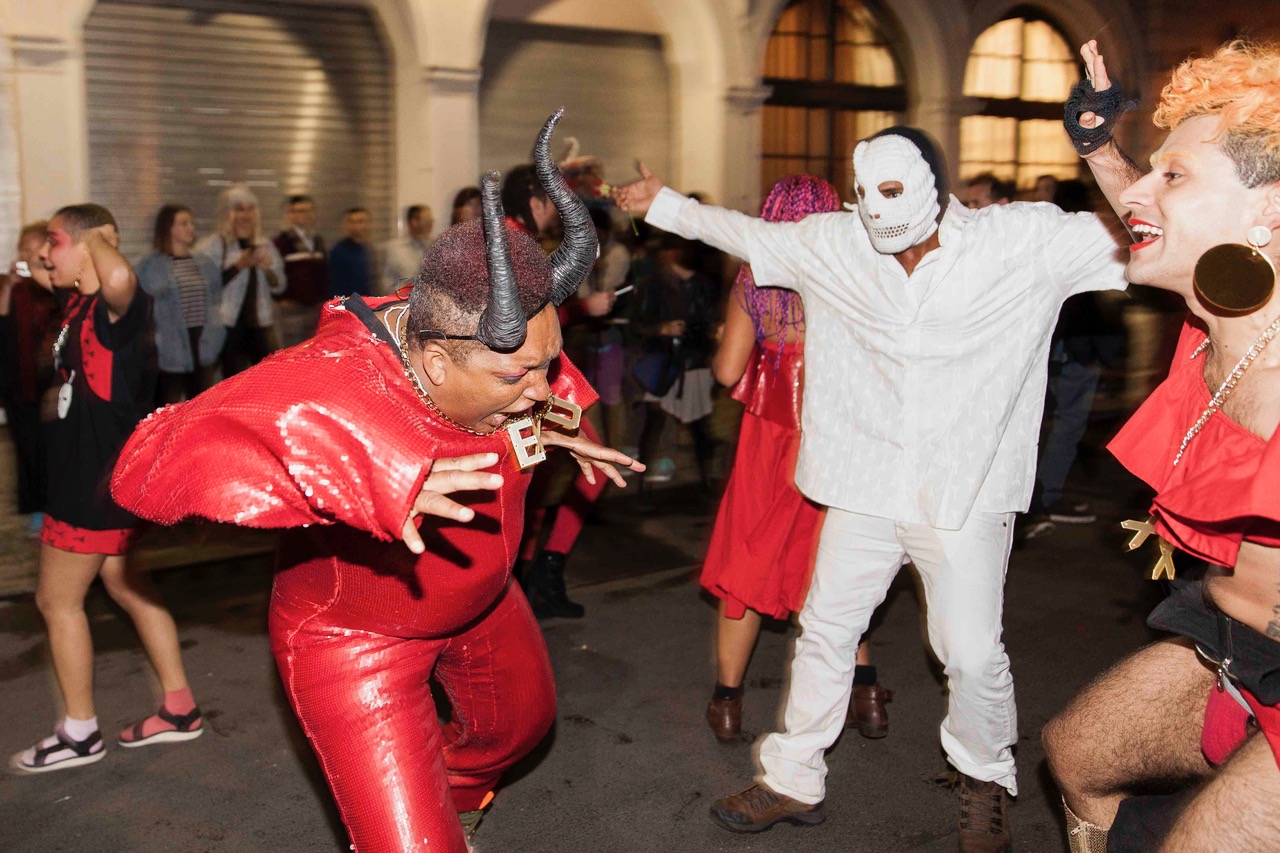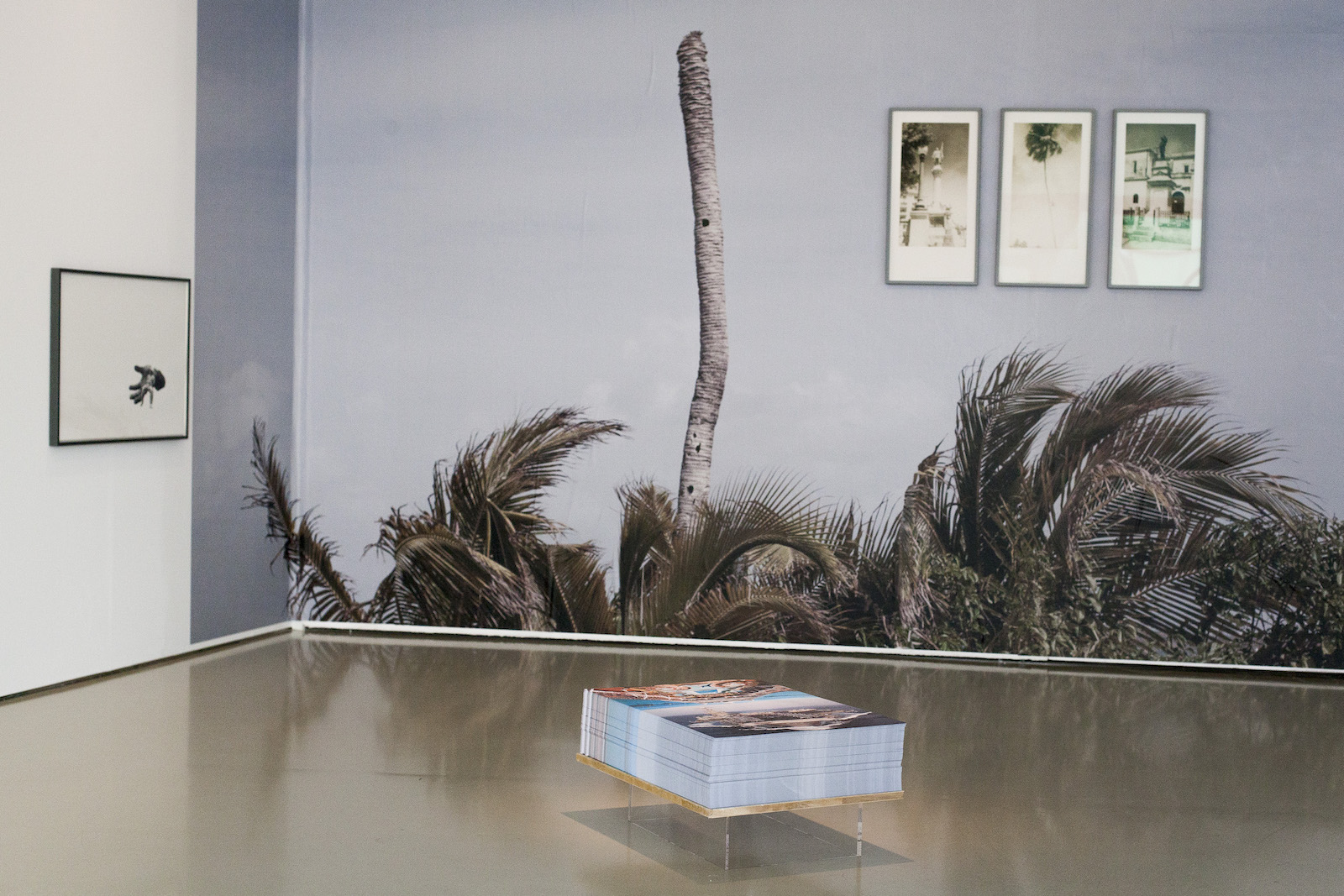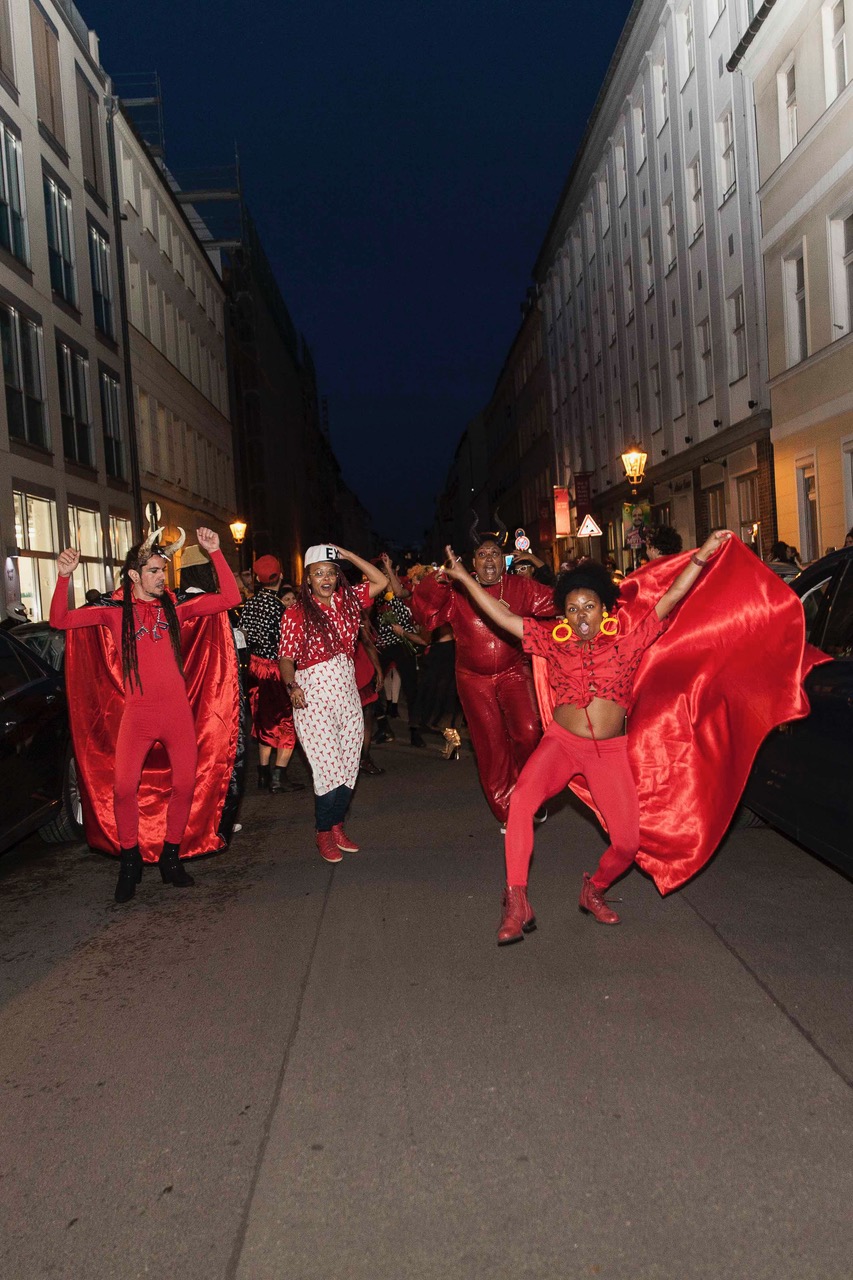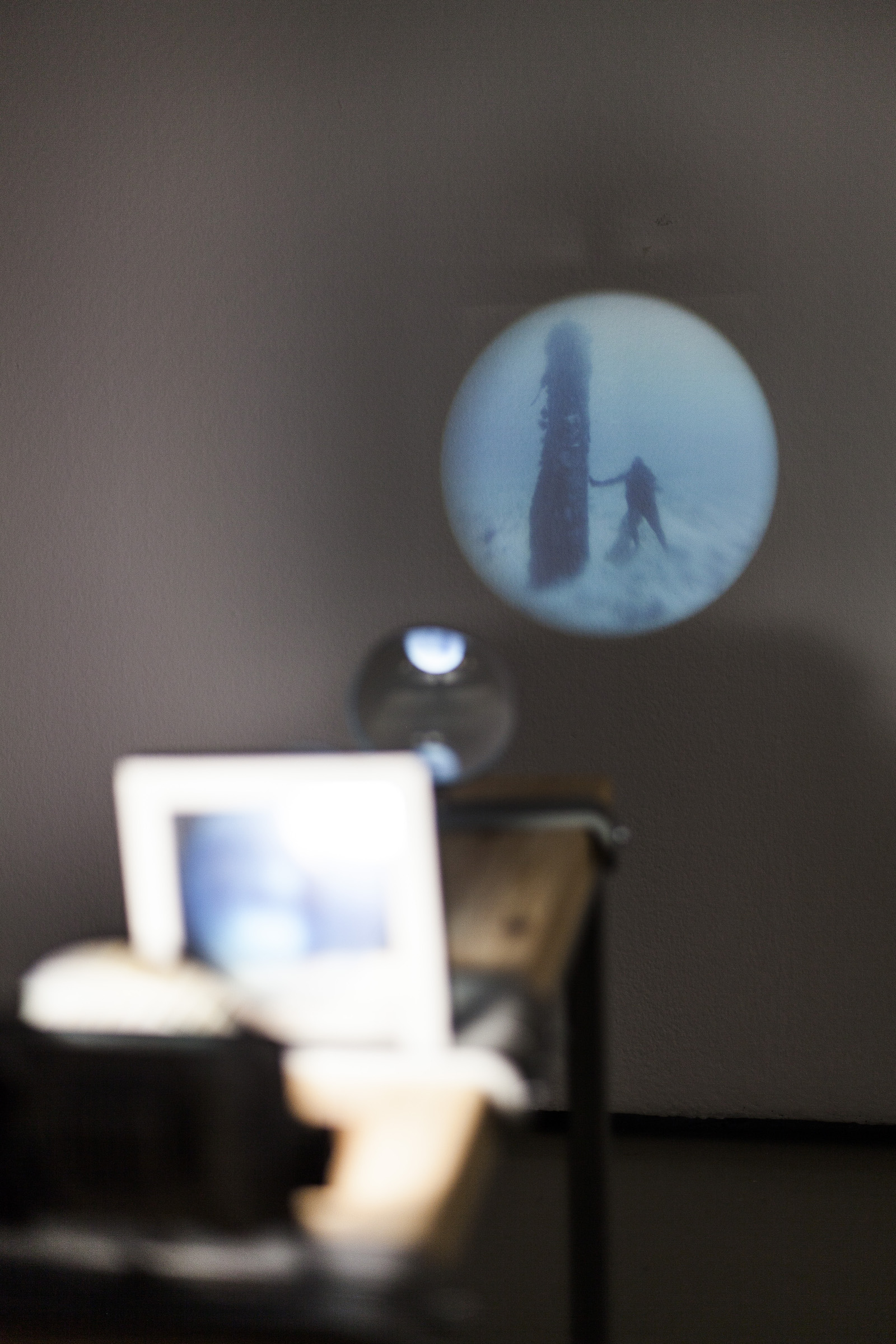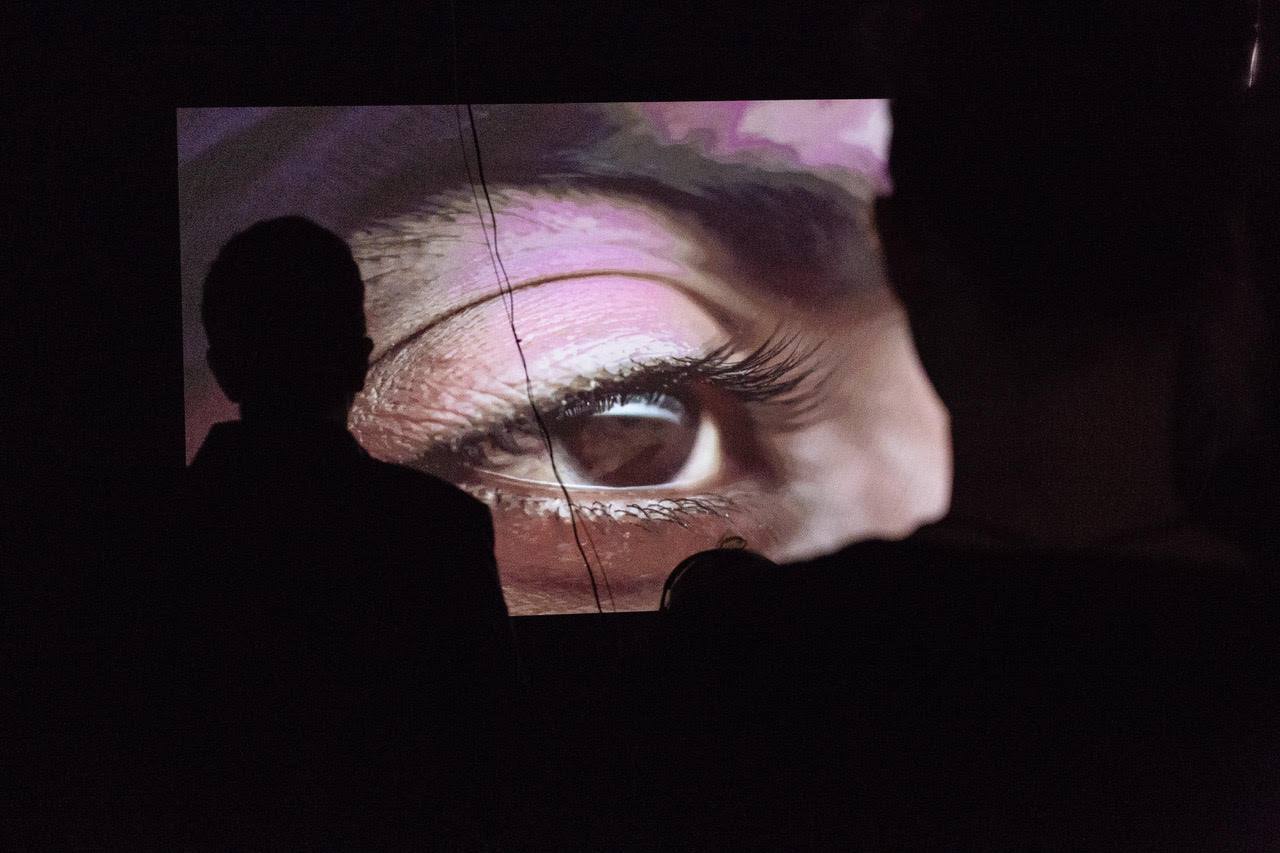The artist Cássio Bomfim devises a fictional cosmology by exploring the nuances and similarities between the codes, rituals, and archetypes of the Brazilian religion Umbanda. In the colonial era, the kingdoms of Portugal and Spain forbid all religious practices deviating from the Catholic Church. It was in this context that religious syncretism developed, which involved translating spiritual rituals, gods, and ritualistic acts of indigenous and African origin into Catholic codes, so as to ensure their continued existence and veneration. This phenomenon shaped the convoluted relations between Catholic saints and the Orishas, the Yoruban gods, and other African cosmological beliefs. Each Orisha became associated with a saint, or even several saints. The Exu, on the other hand, are messengers in the Candomblé religious tradition, who are called on to mediate between the material and immaterial worlds, establishing communication between the two sides. In Umbanda, the Exus play a pivotal role on streets, at cemeteries, and in road crossings. Cássio Bomfim engenders associations with the MOTOBOY figure, the contemporary protagonist of transport and communication in Brazil, basically an Exu in a new form.
“SALVE EXU MOTOBOY!” is an artistic exploration that sparks rebellion against repressive social and religious systems and patronizing colonial aesthetics by shifting the symbolism and the stance of the characters. As a translinguistic process, “SALVE EXU MOTOBOY!” comprises a series of photos, videos, live narratives, and other forms of expression. The performance and the fashion collection presented on the streets of Berlin are accompanied by religious and contemporary funk carioca music.
